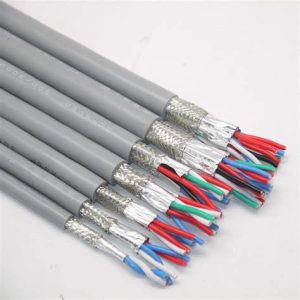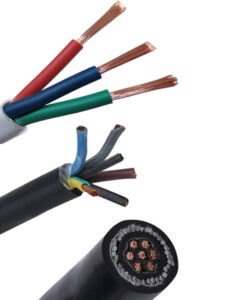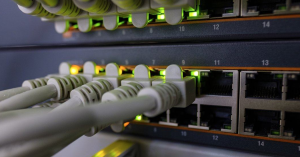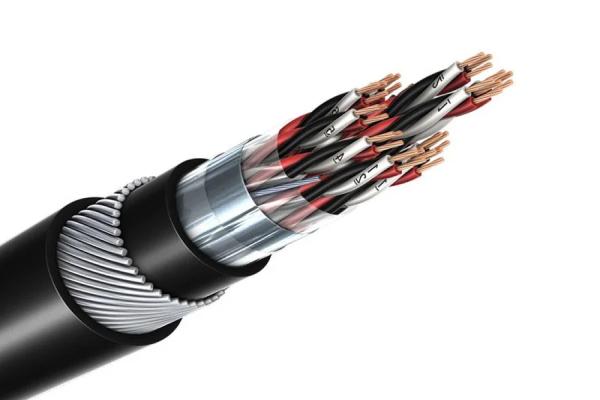在复杂且要求苛刻的工业流程领域, 可靠的连接至关重要. 仪器仪表电缆在确保各种仪器之间的无缝通信方面发挥着至关重要的作用, 传感器, 和在工业环境中的控制系统. 这些电缆是专门设计用于准确有效传输信号的, 即使在恶劣的条件下. 在本文中, 我们将深入研究 仪表电缆的复杂性, 探索他们的类型, 应用, 和现代工业设置的重要性.

了解仪表电缆
仪表电缆是一种专门的电缆. 与电源电缆不同, 旨在携带高水平的电流, 仪表电缆可精确和可靠性处理低压信号.
这些电缆通常由多个导体组成, 通常成对或三合一, 最小化电磁干扰 (电磁干扰) 并确保信号完整性. 导体通常被绝缘和屏蔽以防止外部干扰并保持长距离信号的清晰度. 此外, 它们可能具有各种装甲和外套的选项,以提供机械保护和对环境因素(例如水分)的抵抗力, 化学品, 和极端温度.
仪表电缆的类型
仪表电缆有几种类型, 每个针对特定的应用程序和环境量身定制的. 一些常见类型包括:
多对电缆
这些电缆包含多个扭曲的导体, 每个单独绝缘和颜色编码以易于识别. 乘电缆用途广泛,通常用于工业自动化, 过程控制, 和通信系统.
三合一电缆
三联电缆由三个单独绝缘的导体组成. 它们特别适用于准确的信号传输和噪声免疫至关重要的应用, 例如在温度测量和控制循环中.

铠装电缆
装甲仪器电缆具有额外的防护装甲层, 通常由钢或铝制成, 维护机械损坏和啮齿动物攻击. 它们非常适合在崎and的环境中使用,例如工厂, 炼油厂, 和离岸安装.
防火电缆
这些电缆旨在即使发生火灾,这些电缆即使在. 他们是使用 特殊的绝缘材料 提供高温耐药性和低烟雾排放, 确保在紧急情况下继续操作.
复合电缆
复合仪器电缆将多个功能结合到单电缆结构中, 例如将电源导体与信号导体一起结合. 这简化了安装并减少电缆混乱, 使它们适合于空间受限的环境.
仪表电缆的应用
仪表电缆在广泛的行业和应用中找到广泛使用, 包括:
工业自动化
在制造工厂和工业设施中, 仪表电缆有助于传感器之间的通信, 执行器, 可编程逻辑控制器 (PLCS), 以及监督控制和数据获取 (Scada) 系统. 它们可以实时监控和控制生产过程, 确保最佳效率和生产力.
石油和天然气
在石油和天然气领域, 仪表电缆部署在钻机中, 管道, 和石化植物以传输来自测量参数(例如压力)的传感器的数据, 温度, 和流量. 这些电缆可以承受恶劣的环境条件和危险的气氛, 在苛刻的海上和陆上安装中提供可靠的性能.
发电
仪表电缆在发电设施中起着至关重要的作用, 包括热电厂, 水电大坝, 和可再生能源装置. 它们促进了对设备(例如涡轮机)的监视和控制, 发电机, 和开关设备, 帮助操作员保持安全有效的操作.
运输
在铁路等运输系统中, 机场, 和海港, 仪表电缆用于控制和监视应用中的信号传输. 它们可以实现信号系统的无缝操作, 交通信号灯, 和监视摄像机, 提高运输网络的安全性和效率.
建筑自动化
在商业建筑和基础设施项目中, 仪表电缆支持HVAC的构建自动化系统 (加热, 通风, 和空调), 照明控制, 访问控制, 和安全系统. 它们可以对建筑功能进行集中监控和管理, 优化能源使用和乘员舒适.
质量和可靠性的重要性
鉴于它们在工业行动中的关键作用, 仪表电缆的质量和可靠性至关重要. 质量不佳的电缆会导致信号失真, 数据丢失, 和系统故障, 导致昂贵的停机时间和安全危害. 所以, 从良好的制造商那里来源的电缆至关重要,这些制造商遵守严格的质量标准并采用了强大.

此外, 适当的安装和维护对于确保仪表电缆的最佳性能和寿命至关重要. 安装人员必须遵循行业最佳实践和准则,以最大程度地减少信号干扰, 避免电缆损坏, 并保持电气连续性. 定期检查和测试有助于早期识别潜在问题, 允许根据需要进行及时的维修或更换.
未来趋势和创新
随着技术的不断发展, 仪表电缆还受到持续的进步和创新的约束. 该领域的一些新兴趋势包括:
数字化和物联网集成
随着行业的兴起 4.0 和物联网 (物联网), 仪器电缆正越来越多地与数字通信协议和网络系统集成. 这启用了实时数据收集, 分析, 和远程监视, 提高预测性维护和运营效率.
增强的耐用性和环境阻力
制造商正在开发仪表电缆 具有提高耐用性和适应能力,可以承受严峻的环境条件, 包括极端温度, 化学暴露, 和机械应力. 高级材料和施工技术有助于更长的使用寿命和减少维护要求.

智能电缆解决方案
配备了内置传感器和诊断功能的智能仪表电缆可增强功能,以监视和故障检测. 这些电缆可以检测温度的变化, 湿度, 和振动, 提供潜在问题的预警信号并优化资产管理策略.
可持续性和环保材料
在电缆制造中,越来越重视可持续性和环境责任, 推动采用环保材料和制造过程. 可回收材料, 低排放化合物, 节能生产方法有助于减少仪器电缆的环境足迹.
综上所述, 仪器电缆在确保无缝连接性和 数据传输 在工业环境中. 从制造厂到石油钻机和运输系统, 这些电缆形成了现代基础设施的骨干, 实现有效的控制, 监控, 和自动化. 随着技术的进步和行业的需求发展, 高质量的持续发展, 可靠的仪器电缆对于为未来的互联行业提供动力至关重要.
